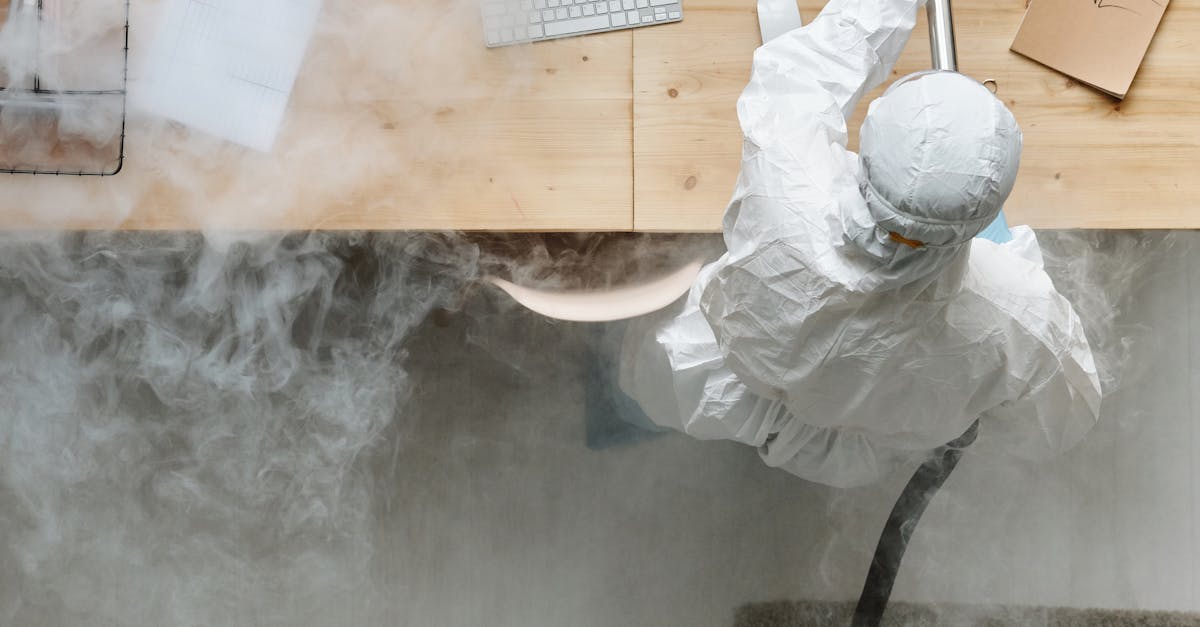
Effective Techniques for Office Sanitisation
Table Of Contents
Role of Technology in Sanitisation
Technological advancements have significantly transformed the way offices approach sanitisation. Smart sensors can detect high-touch areas within a workspace and alert cleaning staff when attention is needed. Robotics in cleaning systems have emerged, allowing for thorough and consistent sanitation processes. These machines can navigate autonomously, reducing the reliance on human intervention while operating on a schedule that best suits business hours.
Integrating mobile apps for sanitisation tracking has also gained traction. Employees can report areas that require cleaning or maintenance through their devices, fostering a proactive approach to workplace hygiene. Data analytics can provide insights into cleaning patterns, making it easier to identify high-risk zones and allocate resources effectively. Such technological innovations not only enhance the overall sanitisation effort but also promote a healthier workplace environment.
Automated Cleaning Solutions
The introduction of automated cleaning solutions has transformed traditional office sanitisation practices, enhancing efficiency and effectiveness. Robotic cleaners equipped with advanced sensors can navigate through office spaces, ensuring that high-touch areas receive consistent attention. These machines operate on predetermined schedules, allowing businesses to maintain a clean environment without disruption to work routines.
In addition to robotic cleaners, UV-C disinfection devices are becoming increasingly popular in office settings. These devices emit ultraviolet light, which effectively kills bacteria and viruses on surfaces. Integration of these technologies not only streamlines the cleaning process but also provides a layer of assurance for employees regarding their health and safety in the workplace.
Employee Involvement in Sanitisation
A proactive approach contributes significantly to maintaining a clean office environment. Employees should feel encouraged to take responsibility for their personal workspaces. Simple actions like wiping down desks and keeping communal areas tidy can prevent the spread of germs. Regular reminders about individual contributions can foster a sense of ownership among staff.
Engagement in sanitisation practices can enhance team morale and collective responsibility. Organising workshops or training sessions on proper sanitisation techniques can equip everyone with necessary skills. Recognising employees who consistently maintain high hygiene standards may also motivate others. Creating opportunities for team discussions about health and safety will deepen the shared commitment to a cleaner workspace.
Creating a Hygiene Culture
Fostering a hygiene culture within the workplace requires active participation from all employees. Regular training sessions can help staff understand the importance of maintaining cleanliness. Encouraging open discussions about hygiene practices can also empower individuals to share responsibilities. Positive reinforcement can motivate employees to adhere to sanitation protocols.
Incorporating hygiene into the daily routine can strengthen this culture. Providing easily accessible sanitising stations and cleaning supplies encourages consistent use among employees. Recognising and rewarding teams or individuals who excel in maintaining cleanliness can further promote a shared commitment. As individuals take ownership of their surroundings, a collective effort towards a cleaner environment becomes ingrained in the workplace ethos.
Guidelines for Handling Office Equipment
Proper use of office equipment is essential for maintaining a sanitary workplace. Employees should be mindful of their hand hygiene before and after using shared devices such as printers, copiers, and phones. Regularly cleaning equipment with disinfectant wipes can help eliminate harmful germs and bacteria. Clear instructions should be provided on how to handle devices safely, ensuring that everyone understands the importance of keeping equipment clean and functional.
Establishing a routine for cleaning office equipment can contribute significantly to overall workplace hygiene. Designating specific responsibilities for cleaning tasks among team members helps create accountability. Encouraging staff to report any equipment issues or needed repairs can prevent the spread of germs through malfunctioning devices. It's important to remind employees to avoid eating or drinking near shared equipment, as this practice can lead to spills and increased maintenance needs.
Best Practices for Shared Devices
The use of shared devices in office environments can introduce various health risks if not properly managed. Regular sanitisation of these devices is essential to minimise the spread of germs. Employees should be encouraged to wipe down devices such as keyboards, mice, and phones with disinfectant wipes before and after use. It is important to select cleaning materials that are safe for electronic equipment to avoid damage.
Implementing a schedule for deep cleaning shared devices can greatly enhance hygiene efforts. Designating specific times for thorough sanitisation by professional cleaners ensures that all equipment is properly maintained. Employees should also be trained on the importance of maintaining personal hygiene, such as regular handwashing and using hand sanitiser, particularly before and after using shared devices. These measures collectively promote a safer working environment for everyone.
FAQS
What are some effective techniques for office sanitisation?
Effective techniques include using automated cleaning solutions, creating a hygiene culture among employees, and following best practices for handling office equipment and shared devices.
How does technology play a role in office sanitisation?
Technology aids in office sanitisation through automated cleaning solutions, such as robotic vacuums and UV-C light sanitising devices, which can enhance cleanliness and efficiency.
Why is employee involvement important in office sanitisation?
Employee involvement is crucial as it fosters a sense of responsibility for maintaining hygiene, encourages adherence to sanitisation protocols, and promotes a collective effort in creating a healthy work environment.
What are some best practices for sanitising shared office devices?
Best practices include regularly cleaning high-touch surfaces, using disinfectant wipes, ensuring hand hygiene before and after use, and encouraging employees to avoid sharing devices when possible.
How can a hygiene culture be created in the workplace?
A hygiene culture can be created by educating employees about the importance of sanitisation, providing the necessary tools and resources, and encouraging open communication about health and safety practices.
Related Links
Tailoring Disinfection Services to Your Office NeedsChoosing the Right Disinfection Service in Melbourne
Benefits of Professional Sanitisation Services for Workplaces
Disinfection Protocols for High-Touch Office Areas
The Science Behind Effective Office Disinfection
The Role of Disinfectants in Preventing Germ Spread in Offices